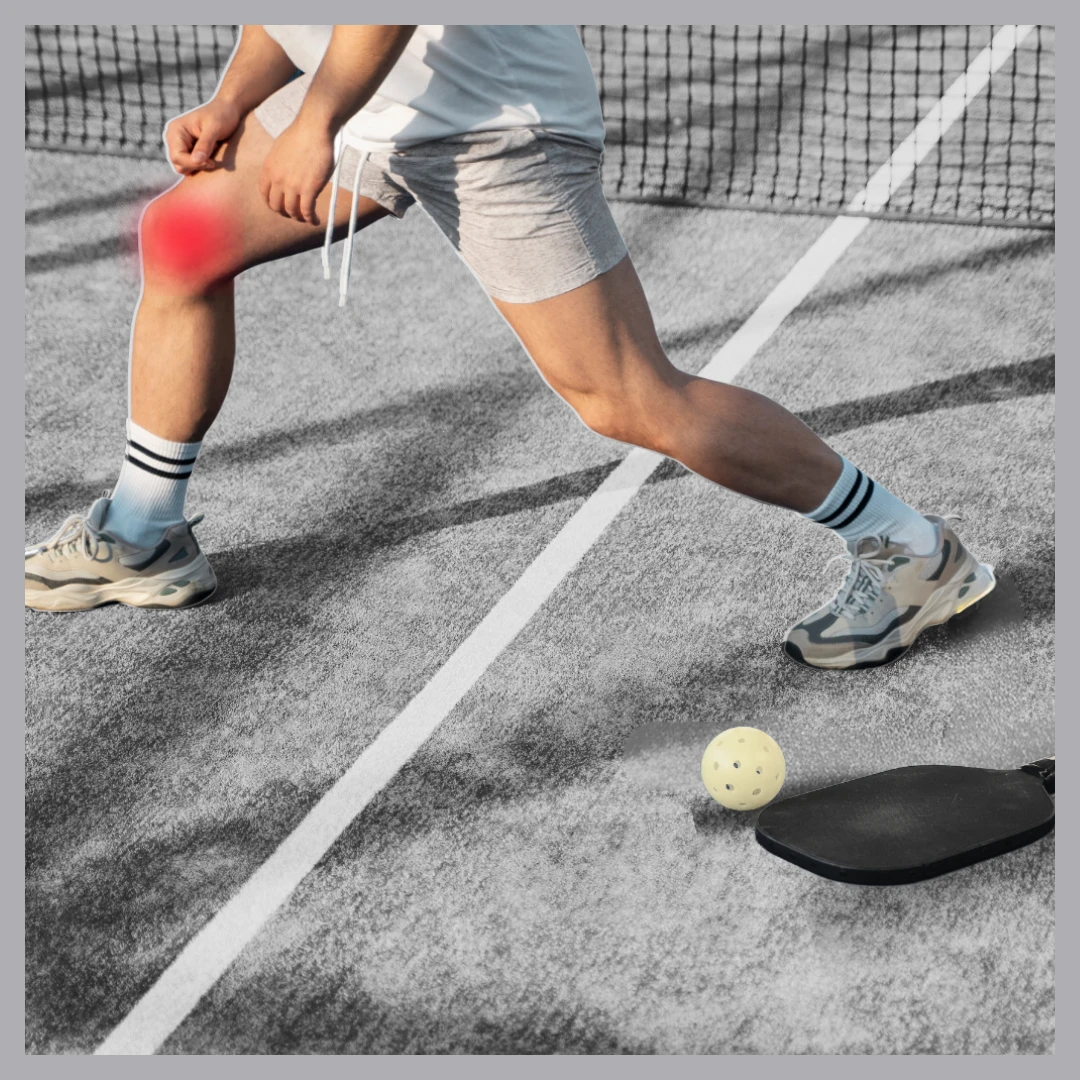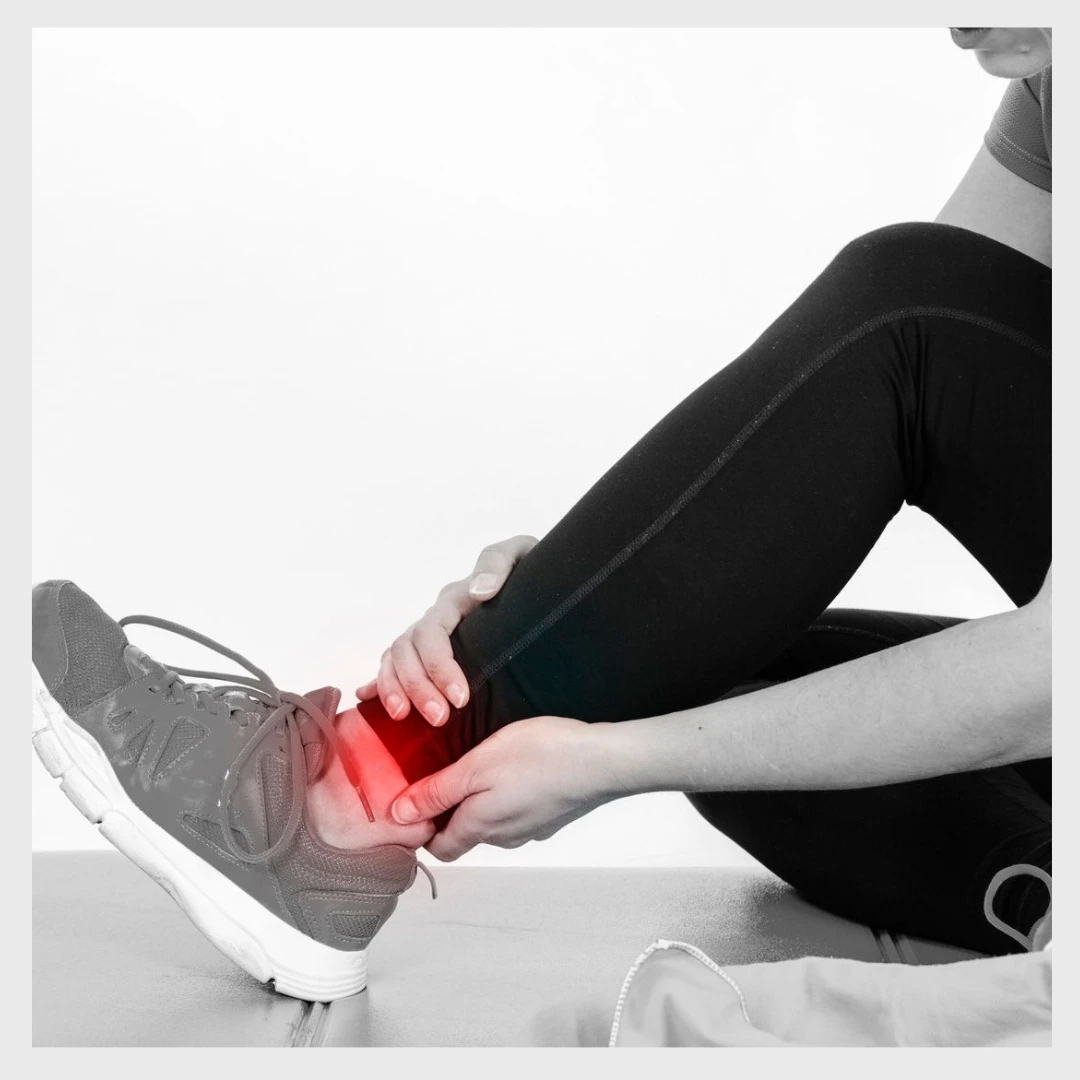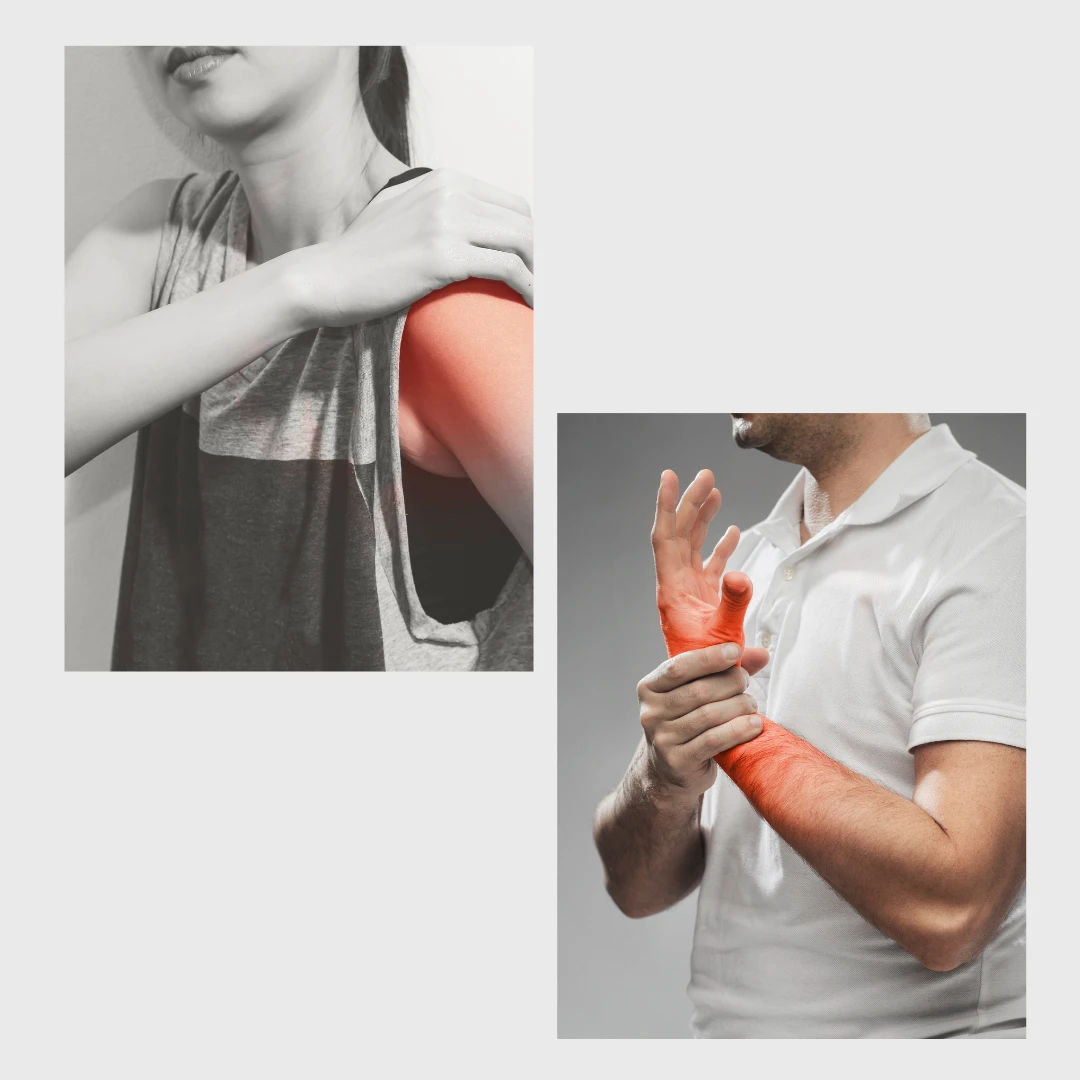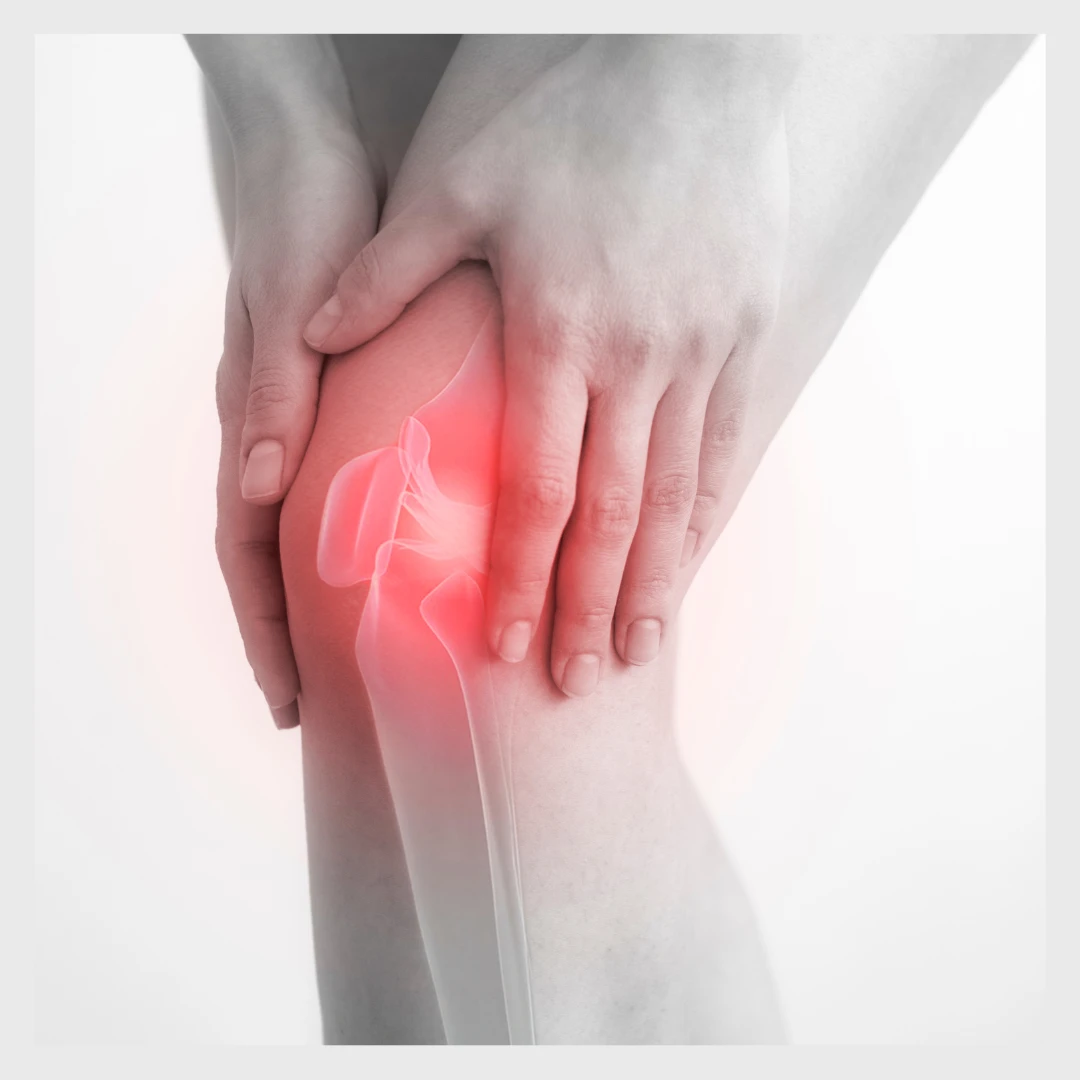Pickleball Injuries: From Strains to Sprains and Common Injuries
- Team Pickleball

Pickleball is not just a game; it’s a rally of passion and determination. Regardless of whether you’re an experienced Pickleball player or a curious beginner stepping onto the court for the first time, understanding Pickleball injuries and how to prevent them is equally important. While it is generally considered a low-impact sport, like any physical activity, it carries the risk of injuries.
So, as players step onto the court with paddles ready for action, they enter a world where swift volleys and cunning strategies reign supreme. However, amid the thrill of the game, the possibility of Pickleball injuries lurk like a hidden opponent. In this dynamic arena, where forehands and backhands dance in harmony, injuries can occasionally interrupt the strains and sprains that test a Player’s toughness.
In this blog, we’ll deep dive into the world of common Pickleball injuries, explore why they happen, and understand how they occur. So, grab your paddle, and let’s dive in!
Chapter I: Why Do Pickleball Injuries Happen?
Pickleball injuries aren’t just a result of chance; they often come from a blend of factors. These factors include not using the right technique, poor warm-up, not being in good shape, and using old equipment. Additionally, doing the same movements such as fast lateral movements, sudden stops, and quick rotations can put a lot of pressure on different body areas, which ultimately results in Pickleball injuries.
Chapter II: The Anatomy of Common Pickleball Injuries:
 1. Ankle Sprains and Strains in Pickleball
1. Ankle Sprains and Strains in Pickleball
Ankle sprains and strains are common injuries that can occur during physical activities, including sports such as Pickleball. One of the most common ways this happens to Pickleball players is when players change directions rapidly while chasing the ball. This action can cause their ankles to twist or overstretch, potentially resulting in sprains or strains.
Ankle Sprains – When the ligaments that connect the bones in the ankle joint are stretched or torn, they result in an ankle sprain. This injury occurs due to forceful rolling of the foot, either inward or outward caused by an overextension of the ligaments. Within this category, ankle sprains are further classified into three distinct grades and reflect each severity of damage:
- Grade 1 involves a mild stretching of ligaments, often accompanied by minimal tearing.
- Grade 2 is where ligaments are partially torn, consequently leading to noticeable instability within the joint.
- Grade 3 is the most severe level and signifies a complete tearing of ligaments that results in significant joint stability.
Ankle Strains – This condition occurs when muscles or tendons around the ankle joint stretch or tear. This can happen due to sudden movements, excessive force, and overuse that may lead to discomfort and pain. The best way to avoid this injury is to engage in the following:
- Proper Warm-up, Cold down, and Stretching
- Proper Footwear
- Ankle Strengthening Exercises
- Balance Training and Proper Techniques
- Gradual progression
- Rest and recovery
While these preventive measures can significantly reduce the risk of ankle injuries, accidents can still happen. Therefore, if you do experience an ankle injury, it’s important to seek medical attention for proper diagnosis and treatment.
2. Shoulder Injuries in Pickleball
Shoulder injuries can result from various scenarios during a game of Pickleball. The rapid and repetitive movements, coupled with the forceful execution of overhead smashes and serves, are often linked to the strain experienced in the shoulder muscles and joints due to these factors.
To reduce the risk of shoulder injuries while playing Pickleball, it’s important to prioritize shoulder strength and flexibility during exercise. In addition, players must warm up properly, use correct techniques, and gradually increase playing intensity. Furthermore, the use of protective gear and being mindful of one’s body mechanics during gameplay can contribute to a safer and more enjoyable experience on the court.
techniques, and gradually increase playing intensity. Furthermore, the use of protective gear and being mindful of one’s body mechanics during gameplay can contribute to a safer and more enjoyable experience on the court.
3. Wrist and Hand Injuries – Pickleball players frequently experience wrist and hand injuries due to repetitive motions as well as improper technique. Some common wrist and hand injuries that can occur while playing pickleball include:
- Tennis Elbow (Lateral Epicondylitis) – This is a common overuse injury in Pickleball games due to the repetitive swinging motion. It involves inflammation of tendons on the outer part of the elbow, thus, causing pain and tenderness.
- Golfer’s elbow (Medial Epicondylitis) – Similarly, this condition affects the tendons on the inner part of the elbow as a result of repetitive motions and gripping.
- In the same way, Carpal Tunnel Syndrome develops from repetitive wrist movements and gripping. This, however, contributes to the compression of the median nerve in the wrist and leads to symptoms such as pain, numbness, and tingling in the hand.
Fractures and Contusions – An accidental fall or impact with the ball or paddle can also cause fractures in the wrist or hand, not to mention the possibility of a contusion.
4. Knee Injuries in Pickleball:
 Like many other sports, Pickleball knee injuries can occur from various factors. The sudden stops and lateral movements can significantly stress the knees and therefore, lead to issues such as patellar tendonitis or meniscus injuries.
Like many other sports, Pickleball knee injuries can occur from various factors. The sudden stops and lateral movements can significantly stress the knees and therefore, lead to issues such as patellar tendonitis or meniscus injuries.
Patellar Tendonitis is commonly referred to as “jumper’s knee,” due to inflammation that occurs in the patellar tendon below the kneecap. Activities such as jumping and quick direction changes can contribute to its development.
On the other hand, sudden twisting motions can result in Meniscus Tears. This affects the cartilage pad that cushions the knee joint. These tears, in turn, bring about pain and restricted mobility.
Another key point to remember is that Pickleball injury prevention is diverse and tailored to each individual. By combining proper techniques, physical conditioning, and awareness of your body, you can enjoy Pickleball while minimizing the risk of knee injuries.
5. Back Injuries in Pickleball:
 Pickleball players generally encounter frequent back injuries including strains and sprains. These injuries usually stem from overexertion, the use of incorrect techniques, or sudden movements while playing. As a result, preventing these injuries involves taking a crucial step—adopting a suitable warm-up routine before starting a match.
Pickleball players generally encounter frequent back injuries including strains and sprains. These injuries usually stem from overexertion, the use of incorrect techniques, or sudden movements while playing. As a result, preventing these injuries involves taking a crucial step—adopting a suitable warm-up routine before starting a match.
Additionally, participating in post-game stretches becomes an essential practice to relieve muscle tension and improve flexibility. By following this preparatory and recovery routine, players can significantly reduce the likelihood of getting muscle strains or ligament sprains. Straining the muscles of the back can occur due to overexerting, using improper form, or making sudden movements. These actions can lead to pain and discomfort.
- Muscle Strains – Muscles in the back can experience strains due to overexertion, improper form, or sudden movements. To prevent muscle strains in the back, it is essential to maintain proper form during physical activities. This approach can significantly minimize the risk of experiencing pain and discomfort.
- Herniated Disc – Because of repetitive bending, twisting, or sudden jarring, the occurrence of disc herniation becomes possible. By doing so, the likelihood of encountering pain and discomfort can be significantly reduced.
Remember that preventing back injuries is not only a combination of practicing good technique and maintaining proper fitness but also listening to your body. By following these guidelines, you can reduce the risk of back injuries while enjoying your game of Pickleball.
Chapter III: The Power of Prevention
Injury prevention is a vital aspect of Pickleball that can significantly impact one’s overall performance. Having comprehensive warm-ups, the right gear, and maintaining proper form ensures that the court not only remains a source of joy but also avoids becoming a potential injury battlefield. In general, there are several ways in which players can prevent injuries while playing Pickleball.
- Always begin with a proper warm-up routine to adequately prepare your muscles and joints for the physical demands of Pickleball
- Put on court shoes with a good grip to avoid slipping and ensure stability during rapid movements
- Use proper technique to effectively ward off overuse injuries
- While playing, make a calculated shot based on both your opponent’s position and your strengths
- Instead of attempting to maximize power in your shots, focus on ball placement
- Engage in effective communication with your doubles partner as this will not only prevent confusion but can also avoid mistakes while playing
Conclusion:
Pickleball offers an excellent platform for staying active and having fun due to its fast-paced rallies and strategic maneuvers. By gaining an understanding of the common injuries that can occur during play, we empower ourselves to take the necessary precautions. As a result, the next time you step onto the court, you can experience the excitement of Pickleball while staying injury-free. With a mindful approach and a commitment to safety, we can serve, rally, and prevent injuries. Therefore, enjoy a worry-free Pickleball game. Thank you fellow Pickleballers for tuning in. See you again on our next blog!
If you would like us to feature your brand in our upcoming Pickleball blogs, Collaborate with Us. We’d love to have you featured.